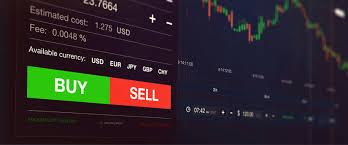
Understanding Forex Trading Leverage: A Comprehensive Guide
Forex trading leverage can be a double-edged sword. For traders, it offers the potential for magnified returns on investments. However, with great power comes great responsibility; hence, understanding how leverage works is crucial for navigating the Forex market successfully. In this article, we will explore what Forex trading leverage is, how it operates, its advantages, its risks, and some best practices. If you are looking for reliable platforms to start your trading journey, consider consulting resources like forex trading leverage Trading Brokers in the Philippines, which can guide you in choosing a suitable broker.
What is Forex Trading Leverage?
Forex trading leverage allows traders to control larger positions in the market with a smaller amount of capital. It is essentially a loan provided by the broker to the trader. For instance, if a trader has a leverage ratio of 100:1, they can control $100,000 worth of currency with just $1,000 of their own capital. This ratio varies by broker, and it can range from as low as 2:1 to as high as 1000:1, depending on regulations and broker policies.
The Mechanics of Leverage in Forex Trading
The calculation of leverage is straightforward. It is calculated by dividing the total value of the position by the margin needed to open that position. For example, if a trader wishes to open a position worth $10,000 and the broker requires a margin of $100, the leverage would be 100:1. The margin is the amount the trader must deposit to open the position, while the rest is effectively borrowed from the broker.
Advantages of Using Leverage in Forex Trading
1. Increased Buying Power: The primary advantage of leverage is its ability to increase the trader’s buying power. This enables traders to enter larger positions than they could with their available funds alone.
2. Potential for Higher Profits: By controlling larger positions, traders have the potential to amplify their profits. For example, if a trader invests $1,000 with 100:1 leverage, a 1% price increase in the currency pair could yield a profit of $1,000.
3. Diversification Opportunities: Leverage allows traders to spread their capital across multiple trades. This can lead to better diversification and risk management in their portfolios.
Risks Associated with Forex Trading Leverage

While leverage can magnify profits, it also magnifies losses. Here are some key risks:
1. Increased Losses: Just as leverage can amplify profits, it can also result in significant losses. If the market moves against a trader’s position, they can quickly find themselves in a negative equity situation.
2. Margin Calls: If a trader’s equity falls below a certain threshold due to losses, the broker may issue a margin call, requiring the trader to deposit more funds or close positions to reduce exposure.
3. Emotional Stress: Trading on leverage can induce stress and emotional decision-making, leading to potential mistakes that can exacerbate losses.
Best Practices for Managing Leverage
To effectively manage leverage and minimize risks, traders should consider the following best practices:
1. Understand Your Risk Tolerance: Before applying leverage, determine how much risk you can comfortably manage. This should align with your trading strategy and financial situation.
2. Use Stop-Loss Orders: Implementing stop-loss orders is critical to protect your capital. This automatically closes a position when it reaches a predetermined loss level, limiting potential damages.
3. Start with Lower Leverage: For beginners, starting with lower leverage ratios may provide a more controlled trading environment as you gain experience and confidence.
4. Keep Learning: The Forex market is constantly evolving. Continuous education on market trends, trading strategies, and risk management practices is essential for long-term success.
Conclusion: Balancing Risk and Reward
Forex trading leverage can be a powerful tool for traders, but it requires diligence, knowledge, and a clear strategy to balance the risks and rewards effectively. By understanding how leverage works, recognizing its dangers, and employing best practices, traders can enhance their trading experience and potentially achieve their financial goals in the Forex market.
